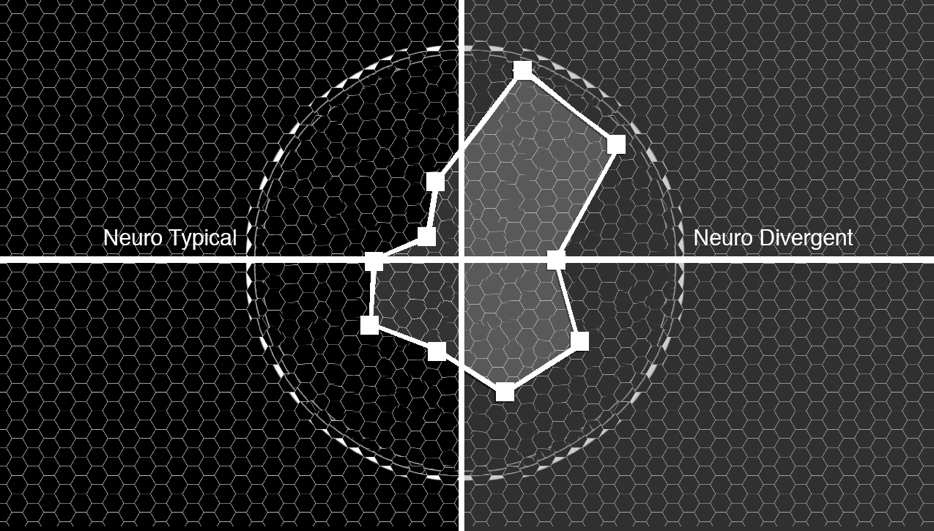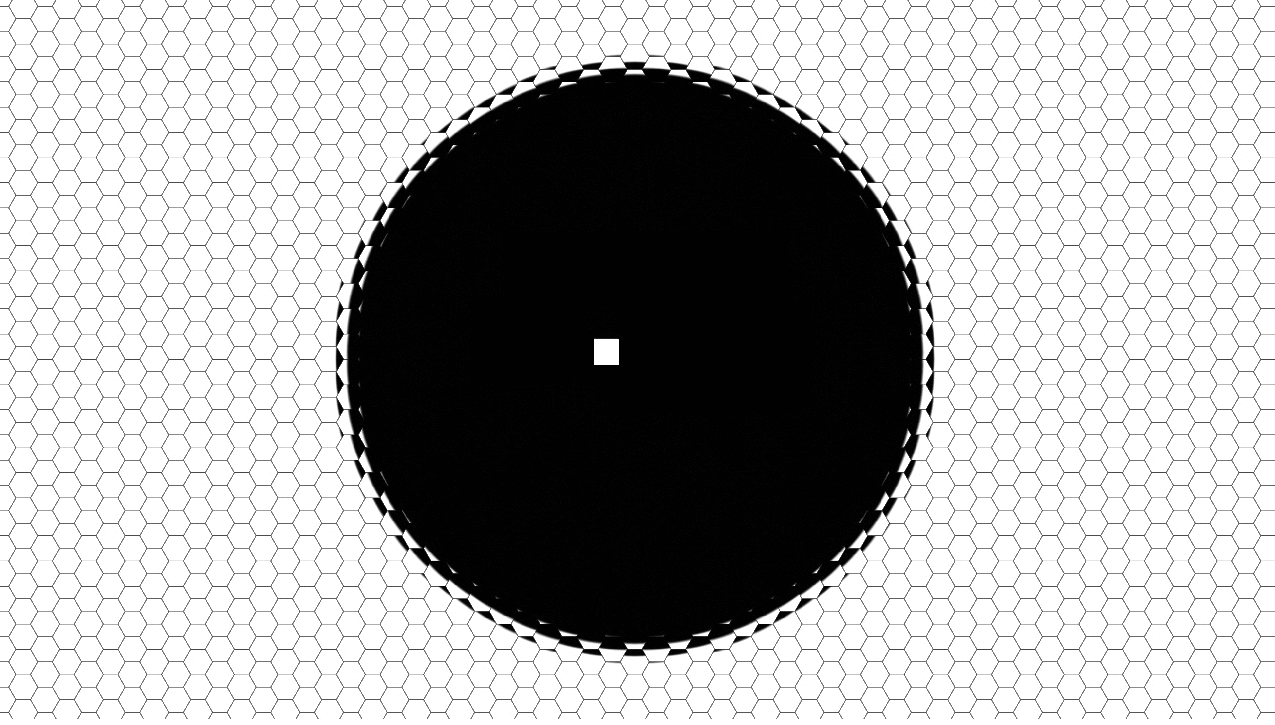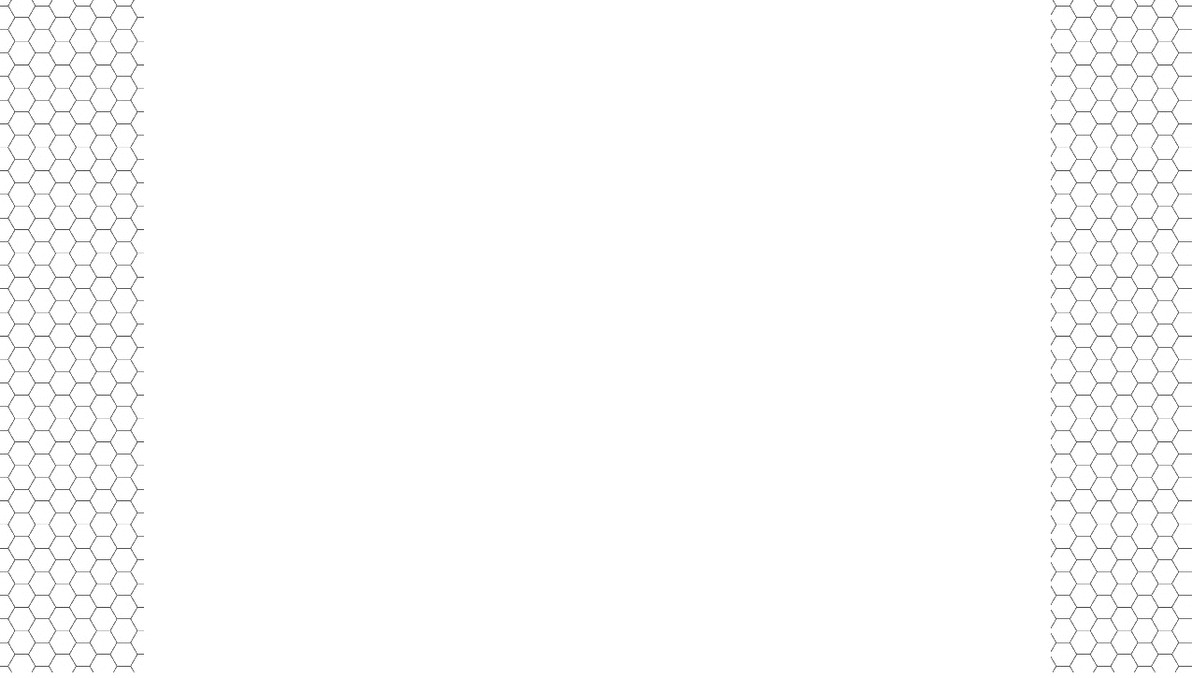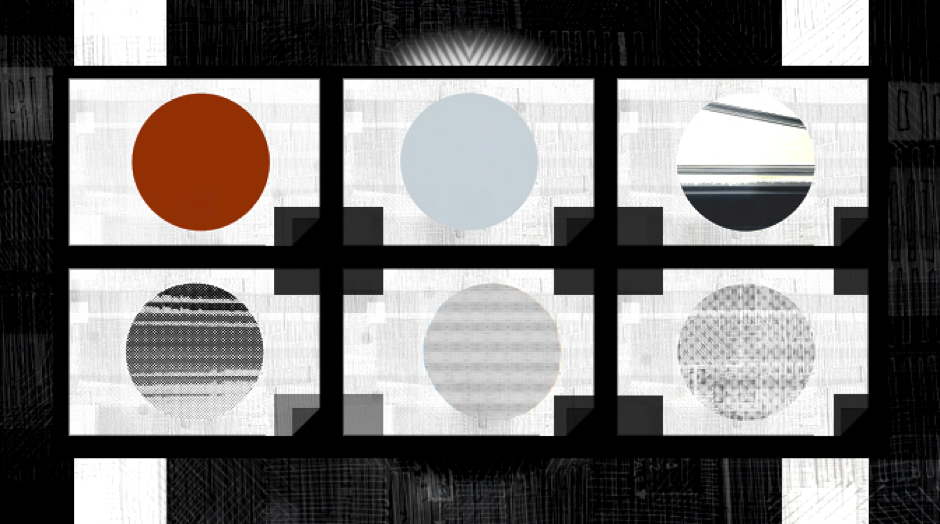
Luca M. Damiani, Media Artist and Associate Lecturer, BA (Hons) Graphic and Media Design, London College of Communication
What is the role of art and design practice within neurodiversity? Framed by an exploration of the relationship between neurodiversity and design, this media submission showcases a series of artworks that aim to open questions and share reflections on neurodivergent artistic practices. Developed as a reflective piece, this media-paper aims to contribute to discussions around neurodivergent thinking within art and design disciplines.
neurodiversity; Asperger syndrome; autism spectrum; art; design; mixed-media
As a neurodivergent (diagnosed with Asperger's, on the autism spectrum), who is also a practicing artist and a UAL lecturer, I am interested in investigating how art and design expand perceptions of and give voice to neurological diversity. I am at the so-called “high functioning” end of the autism spectrum, and a variety of aspects affect how I perceive, see, react and interact; these also influence my artistic practice. In my academic and teaching practice within Graphic and Media Design at London College of Communication, I have started to explore the relationship between art, design and neurodiversity, investigating the wider field, whilst maintaining my insider insight.
At first I thought about writing a case study paper about the topic, however, a visual media submission is more suited to my practice, as it enables me to share artworks that identify different factors of the syndrome I experience. Divided into two parts, the first section of the submission acts as an introduction to neurodiversity in art and education. The second section is a more reflective piece that uses creative media as reflexive, auto-ethnographic observations. This piece does not present an argument or give specific indications or answers about the topic, but is intended to create discussion around neurodivergent thinking.

First introduced in the late 1990s, neurodiversity means neurological diversity (Blume, 1998; Singer, 1999). It embraces many aspects of the brain's functions and neurological diversity (Pollak, 2009), encompassing autism, dyslexia, dyspraxia, dyscalculia, Asperger’s and attention deficit hyperactivity disorder (ADHD). These are grouped by the different ways that neurons are connected, which brings differences in thinking, in seeing, in filtering, in analysing and responding to what surrounds us (i.e. sound, smell, light, colours, space, images, data, objects, etc). These differences in thinking affect aspects of perception and interaction, such as learning, literacy, speech, socialising, communication, relationships, talents and the ability to focus and concentrate. Each neurodivergent individual is different, even when diagnosed with the same condition as someone else. Each experience of the condition is unique.
Scientific language defines individuals as neurotypical and neurodivergent. Neurotypical individuals have a cognitive functioning that fits within societal standards of ‘normal’, although it is argued that there is no typical mental capacity, no ‘normal’ brain to which all other brains should be compared (Armstrong, 2012). Neurodivergence describes cognitive functioning that diverges from the neurotypical brain, meaning that the neurons connect in different, divergent ways. Different types of neurological divergence are diagnosed in a medical context and understood as differences in the ways people process information, in interpreting situations, in acting socially, in learning and seeing (Hendrickx, 2010).
Neurodiversity arises due to the different ways that our brains are networked, how neurons connect to each other and how those connections form and change. Society is neurodiverse as people are not all the same – we are not repetitive modular thinkers and beings. Society is shaped by a diversity of neurotypical and neurodivergent brains (even if this range is sometimes hidden or unknown). Neurodiversity creates multi-disciplinary connections between practices such as science, psychology and technology.
Educational dialogues around neurodiversity focus on it according to abilities and not ‘disabilities’. The recognition of differences allows for a more inclusive society that accommodates different levels of learning, and encourages cultural human growth. The role of art and design within neurodiversity is evident in art education; art and design encourages different ways of looking at or interpreting the world, and thinking differently, shaping diverse voices and opinions. When approaching a topic, arts subjects encourage abstract and unconventional thought processes, meaning they welcome divergent neurons. Research exploring neurodiversity in art education indicates that art and design subjects have a higher proportion of dyslexic students (Bacon and Bennett, 2012). Students with dyslexia often demonstrate artistic abilities, using creative approaches to think about and examine information (Appleyard, 1997). Autistic artists have engaged in a variety of creative media practices in the past and in the present (Fitzgerald, 2005; James, 2005; Mullin, 2014), and there are also examples of scholars with autism (Perner, 2012). As art education responds positively to different learning needs (Pollak, 2009), this atmosphere is conducive to creativity and experimentation, and key to opening up new possibilities, building new forms of interrogation and critical frameworks.
Increased openness to neurodiversity discourse in the arts is indicated by the fact that neurodivergent artists have created and worked in innovative cultural organisations (Rogers, 2012) and been included in research-practice exploration (Myers, 2004). Neurodiversity has been the subject of study in recent years, for example the BBC’s Creating a Positive Environment (CAPE) project during 2016, which sought to encourage neurodiversity in arts-based workplaces. Artworks have also been shown – such as my installation Art, Design and Neurodiversity, created for the V&A Digital Design Weekend in 2017; the exhibition Creative Differences at the Royal College of Art (2016); and art project and installation by Ali Nortcott’s Embodying Differences, current artist-in-residency at the Centre for Research in Autism and Education at University College London in 2017/18.
It is important to recognise and learn about different types of intelligence (Gardner, 1993) and to consider the strengths and talents of the neurodiverse, whether neurotypical or neurodivergent when learning and working (Armstrong, 2012; Grandin, 2004). Arts environments encourage the skills and the abilities (not the disabilities) of neurodivergent individuals, enabling them to have a voice and progress in terms of their personal and professional development in creative design practice.
An individual with autism is often labelled a certain way, depicted as the isolated individual who struggles to communicate, has learning difficulties, is socially peculiar and who in certain cases, is a “genius” of some kind. This representation of autism has unfortunately spread into wider culture, creating a superficial and singular understanding of it. I am not saying that these traits are completely inaccurate, but they do relate to specific areas of a wider autism spectrum with different stages that define the level of the condition and which affect the individual to different degrees. Everyone at any level of the spectrum, has a unique experience of the world specific to them.
Like many others, I am in the high functioning area of the autism spectrum. Many people would not even know that I am autistic (Portway and Johnson, 2010). I might have some personality traits that stand out as 'particular' perhaps, but my colleagues, professional collaborators, students, friends and even wider family members would not think that I am autistic, because I do not reflect the stereotypical depiction. My “aspie-self” was somehow always hidden because I did not experience any learning difficulties that impacted my childhood or my school education. From childhood through to today, I have loved swimming and practiced semi-professionally in a club; this involves high levels of daily commitment and routine which involve socialising as well as physical training. Being part of a team with roles and structures has had a strong influence on how I am. I might experience AS difficulties in social situations (and I do try to avoid them!), but others would not see it as, also due to my hyperactivity, I experience social dynamics differently. I have also developed a good level of acting and performing ability (like many others, including neurotypical individuals), and these are behaviours most probably absorbed during my upbringing. Only the people who are close to me see and live with the more intense parts of my AS. Most of all, it is myself that lives with it. I have learnt to control the flow of my AS and to recognise patterns that are better for me, to help avoid getting into stressful situations which might exacerbate certain parts of my AS, which strongly affect my reactions, feelings and well-being.
Having AS and being a practicing artist, means I am particularly interested in using design to reflect on my neurodivergent being, creating artworks about neurological diversity that could be used to open up dialogue within artistic and academic communities. So, I am sharing here some media design reflections on my neurodivergent experience.
My Aspie Hacks the Brain is a video piece first shown at the Science Gallery Dublin in June 2017, then at the V&A in September 2017. It brings together different aspects of the condition that I experience, but other individuals with AS might have different experiences specific to their condition. The piece considers my high capacity to focus, the necessity of rhythm and repetition in my daily routines, and my heightened perception of sound, smell and surrounding information which can create intense mental filtering and at time, reactions in my brain that mean I need to “rebalance”.
I have tried to depict these moments, structuring and representing my individual aspie neurological flow, considering my relation with the surroundings but also trying to depict my internal processing. In order to create it, I have recorded moments in my daily flow including my academic teaching day, research work and artistic practice. And so, the methods used were of course connected to some areas of my neurodivergent being; I used illustrated patterns (which I create daily as a flow of repetition and relaxation), photography (which I usually hack as a repetitive way of processing the image), 3D (as a concept of construction, deconstruction, reconstruction), and coding (the analytical and mathematical processing of reality).

My Eye Contact Clock Reminder internally reviews the way I tend to avoid eye-contact during a conversation. When speaking face-to-face, I engage with the topic of conversation and tend to visualise the flow of information and thoughts, moving my eyes away to focus on the emptiness over a person’s shoulder for long periods, all the while still having a good productive discussion. I usually feel free to do this with close friends, but in a professional or public scenario it is not always well received. And so I consciously recall my eye movement (with extra effort!) and remind myself that every now and then I need to make eye contact, an eye contact clock reminder.

In the My Repetitive Coping Patterns piece, I look at repetition and structure as key aspects for my smooth and balanced daily functioning. It is interesting to know that my way of balancing and coping came through art, mathematics and technology in a subconscious way, even before getting a diagnosis of the syndrome. Here I show some of my hand-drawn repetitive patterns that I create daily and that I construct as data server and build-up of controlled emotional flow. This also gives me a good and healthy space of mind; if I experience surrounding information overload (especially sound and smell), then neurological stress rises up and this can heighten my AS to an increased stage of the spectrum, and so I try to be critical in my way of reacting and filtering the situation to find a re-balance.
My Privacy and the Social Web is another video-art piece, originally shown at MozFest House (Royal Society of Arts, October 2017). This piece reflects on online privacy, which is extremely important to me. I know the topic of online privacy is important to many other people, but for me it connects to some of my aspie traits as I have an obsessive relationship with privacy on social media. It is very hard for me to even think about being present, connected, updated, always performing on the web. As a millennial, a digital producer and art-tech curator I am interested in the socio-technological interrelations created by the internet in relation to society, politics and identity. Yet, for my own mental health, I cannot comfortably exist in/on social media platforms. This is of course not the same for all AS individuals - social media and the web (without generalising too much) can actually be constructive platforms for being social, engaged and present, assisting where some might have AS difficulties with face-to-face social communication.

As an academic, in this piece I wanted to share (even if this made me feel a bit exposed) a few aspects of my neurodivergent being, in relation to art and design. Descriptions of the various flows could be expanded, but this paper aims only to add a small input, expanding the number of artistic voices and practices explored in neurological diversity and learning in art. This practice-based learning occurs in parallel to practice-based research development; it is part of my thinking process and it enables me to reflect on practice whilst initiating and contributing to academic discussions on the topic of neurodiversity. Art and design, at all levels of academic practice, can explore the potential of inclusive creative thinking on neurodiversity, bridging out into different disciplines such as psychology and neuroscience.
Appleyard, D. (1997) ‘The art of being dyslexic’, The Independent: Education, 27 February. Available at: http://www.independent.co.uk/news/education/education-news/education-the-art-of-being-dyslexic-1280776.html (Accessed: 2 December 2017).
Armstrong, T. (2010) The power of neurodiversity: Discovering the extraordinary gifts of autism, ADHD, dyslexia, and other brain differences. Cambridge, MA: Da Capo Press.
Armstrong, T. (2012) ‘First, discover their strengths’, Educational Leadership, 70(2), pp.10–16. Available at: http://www.ascd.org/publications/educational-leadership/oct12/vol70/num02/First,-Discover-Their-Strengths.aspx (Accessed: 2 December 2017).
Bacon, A.M. and Bennett, S. (2012) ‘Dyslexia in Higher Education: The decision to study art’, European Journal of Special Needs Education, 28(1), pp.19-32. https://doi.org/10.1080/08856257.2012.742748
Blume, H. (1998) ‘Neurodiversity: On the neurological underpinnings of geekdom’, The Atlantic, (September). Available at: https://www.theatlantic.com/magazine/archive/1998/09/neurodiversity/305909/ (Accessed: 2 December 2017).
Damiani, L.M. (2017) ‘Art, design and neurodiversity’, Electronic Visualisation and the Arts, British Computer Society / Computer Arts Society, London, 11–13 July 2017. https://dx.doi.org/10.14236/ewic/EVA2017.40.
Damiani, L.M. (2017) ‘Art, Design and Neurodiversity’, Uniform: V&A Digital Design. Available at: https://digitransglasgow.github.io/bridgingopenborders/contributions/24_ArtDesignNeurodiversity.html (Accessed: 2 December 2017).
Fitzgerald, M. (2005) The genesis of artistic creativity: Asperger's syndrome and the arts. London: Jessica Kingsley Publishers.
Fitzgerald, M. and O'Brien, B. (2007) Genius genes: How Asperger talents changed the world. Shawnee Mission, Kansas: Autism Asperger Publishing Company.
Gardner, H. (1993) Frames of mind: The theory of multiple intelligences. 2nd edn. London: Fontana Press.
Grandin, T. (2006) Thinking in pictures: And other reports from my life with autism. 2nd edn. London: Bloomsbury Publishing.
Grandin, T. and Duffy, K. (2004) Developing talents: Careers for individuals with Asperger syndrome and high-functioning autism. Shawnee Mission, Kansas: Autism Asperger Publishing Company.
Grandin, T. and Panek, R. (2013) The autistic brain. London: Rider Books.
Hendrickx, S. (2010) The adolescent and adult neuro-diversity handbook: Asperger's syndrome, ADHD, dyslexia, dyspraxia, and related conditions. London: Jessica Kingsley.
James, I. (2005) Asperger's syndrome and high achievement: some very remarkable people. London: Jessica Kingsley Publishers.
Myers, P., Baron-Cohen, S. and Wheelwright, S. (2004) An exact mind: An artist with Asperger syndrome. London: Jessica Kingsley Publishers.
Mullin, J. (2014) Drawing autism. London: Lom Art.
Perner, L. (ed.) (2012) Scholars with autism achieving dreams. Sedona: Auricle Ink Publishers.
Pollak, D. (2009) Neurodiversity in higher education: Positive responses to specific learning differences. New York: John Wiley.
Portway, S.M. and Johnson, B. (2010) ‘Do you know I have Asperger’s syndrome? Risks of a non-obvious disability’, Health, Risk and Society, 7(1), pp. 73-83. https://doi.org/10.1080/09500830500042086
Purkis, J., Goodall, E. and Nugent, J. (2016) The guide to good mental health on the autism spectrum. London: Jessica Kingsley Publishers.
Rogers (2012) ‘Culture of Autism, Neurodiversity, and Art Education’. New York: Art Beyond Sight. Available at: http://www.artbeyondsight.org/mei/wp-content/uploads/White-Paper-Pam.pdf (Accessed: 18 March 2018)
Royal College of Art (2016) ‘Exhibition: Creative Differences: Dyslexia and Neurodiversity in Science, Art and Design’, RCA: Events, 6–7 October. Available at: https://www.rca.ac.uk/news-and-events/events/creative-differences-dyslexia-and-neurodiversity-science-art-and-design/ (Accessed: 2 December 2017).
Runswick-Cole, K., Mallett, R. and Timimi, S. (2016) Re-thinking autism: Diagnosis, identity and equality. London: Jessica Kingsley Publishers.
Singer, J. (1999) ‘Why can't you be normal for once in your life?’ In Singer, J. and French, S. Disability discourse. Buckingham, PA: Open University Press, pp. 59-67.
Luca M. Damiani is a Media Artist and an Associate Lecturer on BA (Hons) Graphic and Media Design at London College of Communication. Luca practices internationally in the fields of the Arts, Digital Media and Visual Culture. He works and experiments with creative techniques such as digital tech, illustration-animation, photography, coding and mix-media. With a multi-methodological approach, Luca explores artistic processes re-considering the combination of methods. His ongoing research-based practice looks at various areas of applied art and design, with the main focus on technology, digital art, neurodiversity, and human rights. A published artist-author of several books and papers, his work is actively exhibited and showcased. Luca has collaborated with many institutions, such as: Computer Arts Society, Mozilla Foundation, NESTA, Amnesty International, BBC, TATE, V&A and Thames & Hudson.